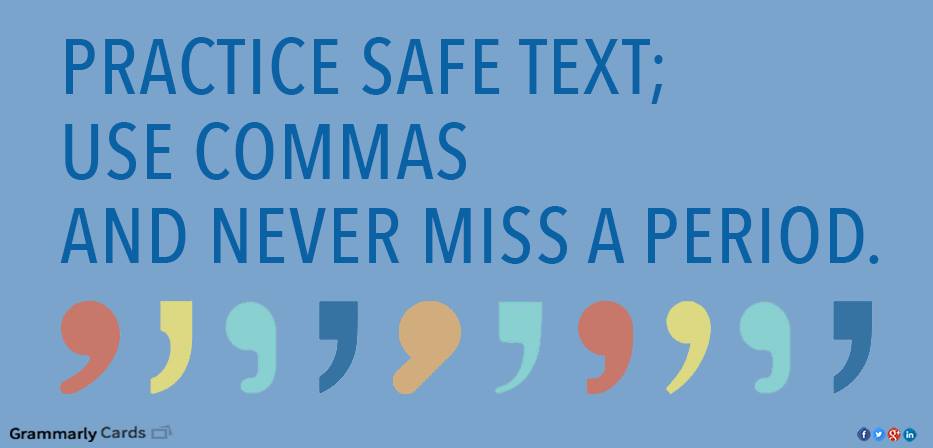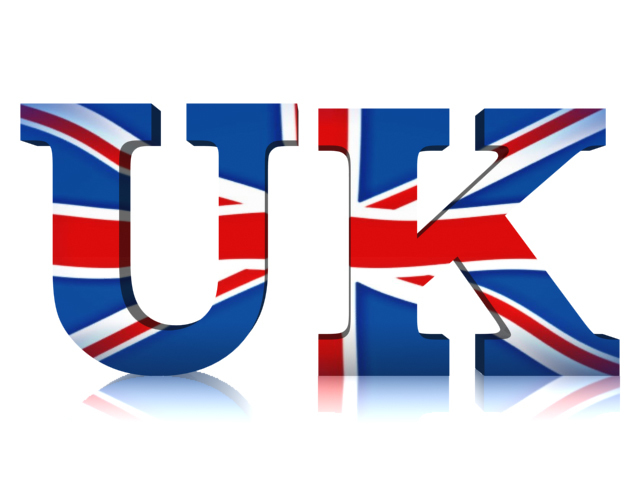Punctuation
Theory
Знаки пунктуации в английском языке
Вот общепринятые пунктуационные знаки в английском языке, которые имеют следующие названия:
- . – full stop / period (точка)
- ? — note of interrogation / question mark (вопросительный знак)
- ! — note of exclamation / exclamation mark (восклицательный знак)
- , — comma (запятая)
- ; — semicolon (точка с запятой)
- : — colon (двоеточие)
- — hyphen (дефис)
- – dash (тире)
- … — dots (многоточие)
- ‘ – apostrophe (апостроф)
- [ ], ( ) – brackets / parenthesis (скобки квадратные, круглые)
- “ “ – inverted commas / quotation marks
Хотелось бы кратко упомянуть о функциях того или иного знака пунктуации в английском языке. Акцент сделаем на отличие от правил русского языка.
В английском точка употребляется не только в конце предложения, но иногда и после аббревиатур (Mrs. White, Dr. House), а также всевозможных сокращений (Jan.=January, Co.=Company).
Вопросительный знак так и называется, потому что расположен в конце вопросительных предложений. Завершая эллиптическое (сокращенное) предложение, он передает удивление или недоумение. Однако не стоит помещать этот знак пунктуации в английском языке после вопроса, выраженного в косвенной речи дополнительным предложением (She answered where she had spent the rest of the day).
Коллега предыдущего знака препинания – восклицательный знак – указывает, что в слове, словосочетании или предложении выражены какие-либо эмоции: радость, восхищение, удивление, сочувствие, возмущение, негодование и т.д. (I can’t do it! Oops! What a beautiful day!). Однако не стоит ставить восклицательный знак после обращения в начале письма, как это принято в русском языке. В данном случае воспользуйтесь запятой.
Запятая…один из самых трудных пунктуационных знаков, так как правила его употребления в английском порой существенно отличаются от русского языка. Этих нюансов достаточно много, поэтому подробно на них останавливаться нет смысла. В идеале запятую следует изучать, как отдельный знак пунктуации в английском языке. Запятая, как правило, ставится в следующих случаях: когда перечисляются объекты; когда присутствуют обращения, приложения, вводные слова; когда мы имеем дело с сочинительными предложениями, части которого соединяются союзом and; когда мы имеем причастные и абсолютные обороты в начале предложения; а также вводные инфинитивные конструкции. Запятая вам также понадобится при написании дат (отделять год от месяца и числа), выделении междометий, перед подписью в конце письма, перечислении званий и титулов.
Точка с запятой существует для того, чтобы разделять части сложносочиненного предложения при отсутствии союзов (I spoke to Kate on Friday; she is not going to come tomorrow). Если же у вас в предложении много простых запятых, обратитесь к точке с запятой, чтобы разделить все части по смыслу.
Если мы говорим о таком знаке пунктуации в английском языке, как двоеточие, то сразу представляем два предложения, причем второе дополняет или объясняет первое (Your work is unsatisfactory: your knowledge of grammar leave much to be desired), или же представляет собой перечень того, что было обобщено в первом (You need the following: tomatoes, cabbage, pepper, some salt and sugar.). Конечно, не забываем про двоеточие при введении цитат на английском языке, прямой речи.
Тире в английском языке, так же как запятые и скобки, помогает выделять дополнительную информацию (The flat – the one you bought a year ago – was set on fire last night). С его помощью мы отделяем списки и перечни от обобщающих слов (She chose some new books for her future study – grammar one, book of activities, audiobook…), создаем длительную паузу или незавершенность высказывания. «Малый брат» этого знака – дефис – соединяет два и более слова, образуя составное (merry-go-round, forty-five). Благодаря дефису мы можем переносить слово с одной строчки на другую.
Многоточие показывает нам, что предложение не завершено по смыслу. Также оно служит выражением колебания или волнения говорящего. В скобки мы помещаем дополнительную информацию, пояснения и вводные предложения. Назначение кавычек всем известно – обозначение начала и конца прямой речи, цитаты, выделение названий. Только помните, что в английском языке кавычки ставятся не внизу, а вверху. И, наконец, апостроф, который сигнализирует о пропуске одной или нескольких букв в слове. С его помощью мы создаем притяжательный падеж существительных, сокращенные формы глаголов.
Безусловно, это неполная информация по пунктуации в английском языке. Существует еще достаточно много случаев употребления определенных знаков препинания, а также исключений из этих правил. Более подробно ознакомиться с этой областью знаний вы могли бы в «Методичке по пунктуации в английском языке», автором которой является Г.В. Чеснокова. Найти этот материал вы сможете на ресурсе durov.com.
From site:http://engblog.ru/
-
Our Friend, the Comma
Comma story - Terisa Folaron
It isn't easy holding complex sentences together (just ask a conjunction or a subordinate), but the clever little comma can help lighten the load. But how to tell when help is really needed? Terisa Folaron offers some tricks of the comma trade.
You really don’t have to be an expert writer or a college graduate to be able to punctuate a sentence correctly. So what is the big deal about this little guy, the comma? Well, it is often overused, misplaced, mistaken and kicked around without much regard as to why!
One way to eliminate the confusion is to look at the main job of a comma. A comma is a pause. It is used to slow us down, lets us place emphasis where it needs to go, and allows us to write more complex sentences.
-
Rule One: A comma is used to separate a series of three or more words, phrases or clauses Examples: I like to eat pizza, chocolate, apples, and donuts.
We spoke on the phone in the morning, in the evening, and again late at night.
The boys went to the baseball game, the arcade, and then to band practice.
I haven’t traveled to Paris, studied French, or met any French people.
-
Rule Two: A comma is used to separate two independent clauses that are joined by conjunctions such as but, and, nor, for, yet, or so. Examples: I would go with you, but I have too much work to do.
He is a great artist, and he loves his work.
I’m still angry with Sue, so I don’t want to see her.
Rules for Commas
The comma is a valuable, useful punctuation device because it separates the structural elements of sentences into manageable segments. The rules provided here are those found in traditional handbooks; however, in certain rhetorical contexts and for specific purposes, these rules may be broken.
1. Use a comma to separate 2 independent clauses joined by
|
||||
|
*when so means as a result
Example:
Jenny wants to help feed the poor, so she is planning on going to Africa this summer.
The doctor would like to see you, but he has been at the hospital all day.
When the 2 independent clauses are very short, some people don't use commas. However, if you use a comma, it is still okay.
Joseph likes cheese cake, but Carol likes chocolate cake.
Joseph likes cheese cake but Carol likes chocolate cake.
2. If there is a list of three or more items, use a comma.
Mom bought grapes and bananas. (no commas)
Mom bought grapes, bananas, and strawberries.
3. If there are two or more adjectives in a row.
Tim is a handsome, smart man.
4. When a dependent clause, unnecessary word, or unnecessary phrase AND an independent clause are put together, there is usually a comma.
Unless I see you, I won't go.
Though George is president of the company, he can still be fired.
When Mei was in Taiwan, she often wrote to me.
I won't go unless I see you.
5. When an adjective clause is unnecessary, use commas.
The president of the company, who is a Harvard graduate, plans on retiring at the end of the month.
6. Use commas before a direct quote.
Mark said, “I loved visiting China and Korea.”
7. A name or title that is used to address or call a person to attention.
When, Sir, you come back to this hotel, I cannot guarantee you a room.
NOTE: When the name is with an important term of identification, don't use a comma.
Alexander the Great
8. A comma usually follows a transition word.
Robert studied for a whole week. Therefore, he got an A+.
Jake worked 12 hours a day. Consequently, he earned enough money to travel the whole summer.
!!! Comma Abuse:
1-Don't use a comma to separate the subject from the verb.
2-Don't put a comma between the two verbs or verb phrases in a compound predicate.
3-Don't put a comma between the two nouns, noun phrases, or noun clauses in a compound subject or compound object.
4-Don't put a comma after the main clause when a dependent (subordinate) clause follows it (except for cases of extreme contrast).
-
2
The Confuser, the Semicolon
Everyone hates the poor little semicolon. It baffles even us native speakers, and when we do attempt to use, we feel uncertain. The semicolon is also just not used that much. Maybe we prefer to avoid it and find ways around it. The two rules to introduce first are described here.
Rule One: Use a semicolon to combine two very closely related complete sentences. Examples: Don’t go in the water; it is contaminated.
The CEO spoke at the conference; he told us no one would get laid off.
Call me in the morning; I will give you my answer then.Rule Two: Use a semicolon along with a conjunctive adverb and a comma to clarify the relationship between two closely related complete sentences. Conjunctive adverbs include however, therefore, in addition, moreover, subsequently, consequently, instead, and additionally. Examples: Jane called in sick again today; therefore, the boss is going to let her go.
The bridge is collapsing; however, engineers are working day and night to fix it.
From the site: Busy Teacher.org
Ellipsis
Ellipsis is the singular form of the word, meaning one.
- Ellipses is the plural form of the word, meaning more than one ellipsis.
The ellipsis is also known to some as dot-dot-dot because it consists of three periods, or dots, in a row.
The first part of this lesson will focus on when to use ellipses in writing.
The second part of this lesson will describe how to create ellipses on a word processor.
When to use ellipses
1. Use an ellipsis to show an omission, or leaving out, of a word or words in a quote. Use ellipses to shorten the quote without changing the meaning.
For example:
- "After school I went to her house, which was a few blocks away, and then came home."
Shorten the quote by replacing a few words with an ellipsis. Remember, the meaning of the quote should not change.
- "After school I went to her house … and then came home."
We removed the words "which was a few blocks away" and replaced them with an ellipsis without changing the meaning of the original quote.
2. Use an ellipsis to show a pause in a thought or to create suspense. (Suspense is when a reader is excited to know what is going to happen next.)
Examples:
- She opened the door . . . and saw . . . a cake!
- I was thinking . . . maybe we should call home.
This use of ellipses is very common in informal (friendly) letters and emails.
3. Use an ellipsis to show a break, or trailing off, of a thought.
Examples:
- I know I saw my keys somewhere . . .
- "I'm not sure what to do . . .," he said.
- I never thought . . .
How to make an ellipsis
An ellipsis is made of three dots called ellipsis points. Ellipses are exactly three dots, not two or four.
1) On a word processor, type three periods with spaces in between.
This type of ellipsis is usually used to show a pause or a trailing thought as in the examples in rules 2 and 3 above.
Examples:
- She opened the door . . . and saw . . . a cake!
- I was thinking . . . maybe we should call home.
Examples:
- I know I saw my keys somewhere . . .
- I never thought . . .
- "I'm not sure what to do . . .," he said.
2) Many word processing programs will automatically create ellipses if you type three periods in a row. Just type a space, three periods, and a second space and move on to the next word. The ellipsis will look smaller than three spaced out periods.
Correct: We went to the city … and arrived home after midnight.
The word processing program automatically created an ellipsis when I
typed three periods without spaces in between.
3) If the ellipsis is in the place of a word or part of a sentence, leave a space on each side of the ellipsis.
For example:
- (Without an ellipsis)
We went to the city, shopped, ate lunch and arrived home after midnight. - (With an ellipsis, removing the words "shopped, ate lunch")
We went to the city … and arrived home after midnight.
4) If the ellipsis is used to replace words at the end of a sentence, it should be followed by a period (.), question mark (?) or exclamation point (!) to end the sentence.
4. Use an ellipsis with a period to shorten a quote.
If the ellipsis is followed by a period, then you will have 4 dots.
For example:
- She said, "I like apples, oranges and bananas because they are all fruits."
- She said, "I like apples, oranges and bananas … ."
5. Use an ellipsis with a question mark after a trailing thought.
Examples:
- Why would he do that . . . ?
- Where is she . . . ?
6. Use an ellipsis with an exclamation point to show excitement after a pause.
Examples:
- Wow . . .!
- I cannot believe you did that . . .!
In summary, the ellipsis is a form of punctuation used in writing the English language. It can be used to show an omission, to show a pause or create suspense, or to show a break in a thought. An ellipsis is made by using three periods in a row.
These were the uses of the ellipsis. Now that you know them, it is time to practice! Read and do exercises.

